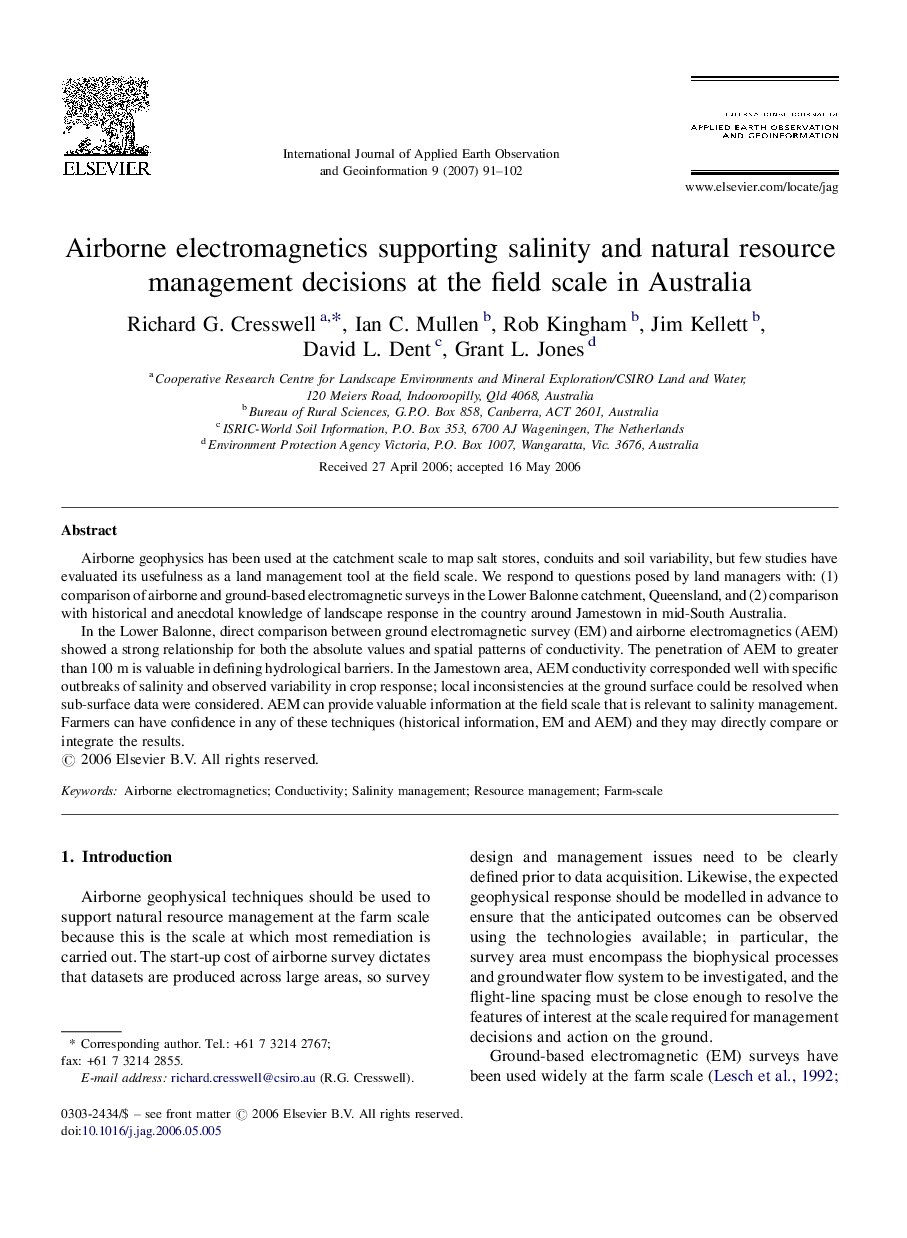| Article ID | Journal | Published Year | Pages | File Type |
|---|---|---|---|---|
| 4465462 | International Journal of Applied Earth Observation and Geoinformation | 2007 | 12 Pages |
Airborne geophysics has been used at the catchment scale to map salt stores, conduits and soil variability, but few studies have evaluated its usefulness as a land management tool at the field scale. We respond to questions posed by land managers with: (1) comparison of airborne and ground-based electromagnetic surveys in the Lower Balonne catchment, Queensland, and (2) comparison with historical and anecdotal knowledge of landscape response in the country around Jamestown in mid-South Australia.In the Lower Balonne, direct comparison between ground electromagnetic survey (EM) and airborne electromagnetics (AEM) showed a strong relationship for both the absolute values and spatial patterns of conductivity. The penetration of AEM to greater than 100 m is valuable in defining hydrological barriers. In the Jamestown area, AEM conductivity corresponded well with specific outbreaks of salinity and observed variability in crop response; local inconsistencies at the ground surface could be resolved when sub-surface data were considered. AEM can provide valuable information at the field scale that is relevant to salinity management. Farmers can have confidence in any of these techniques (historical information, EM and AEM) and they may directly compare or integrate the results.
